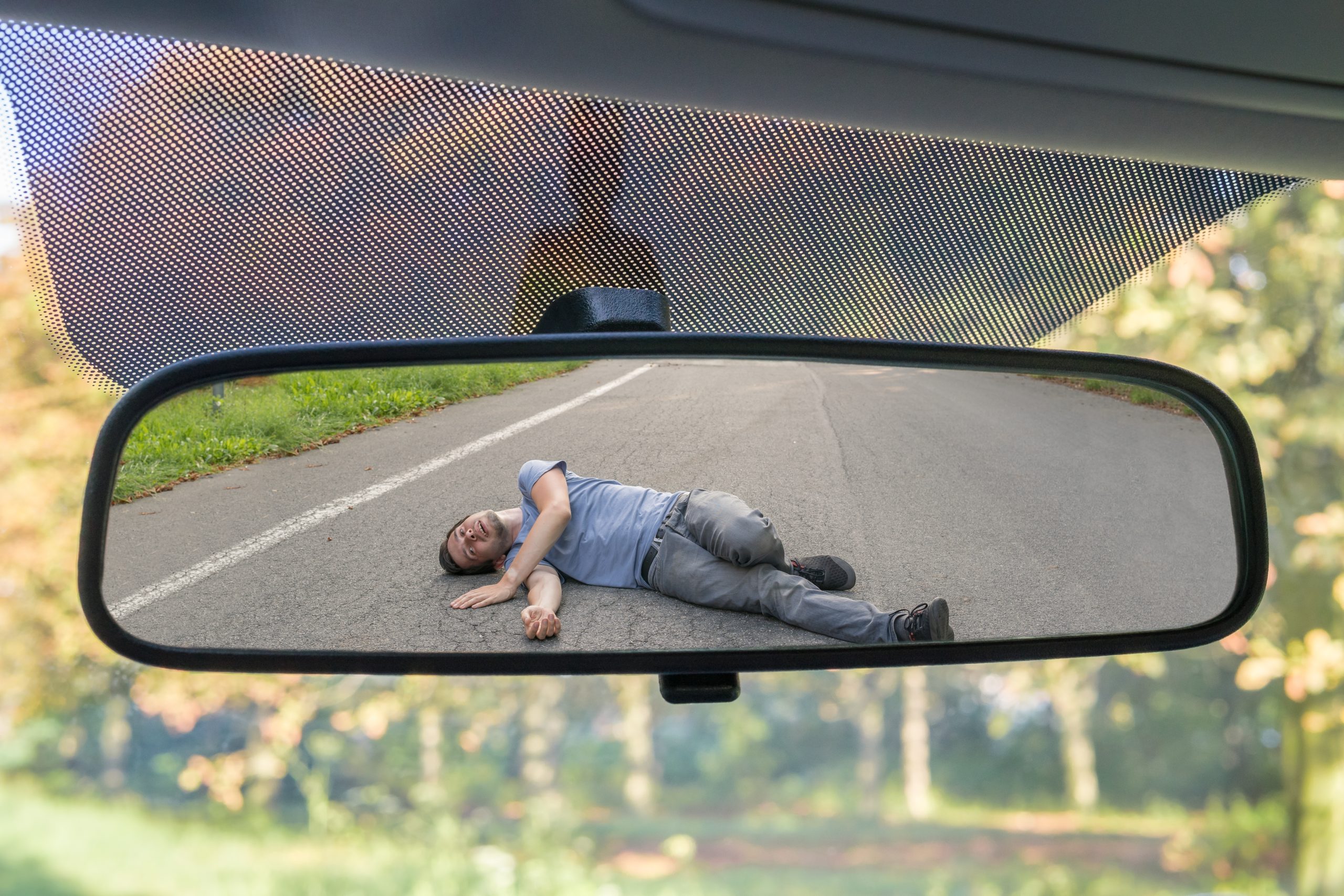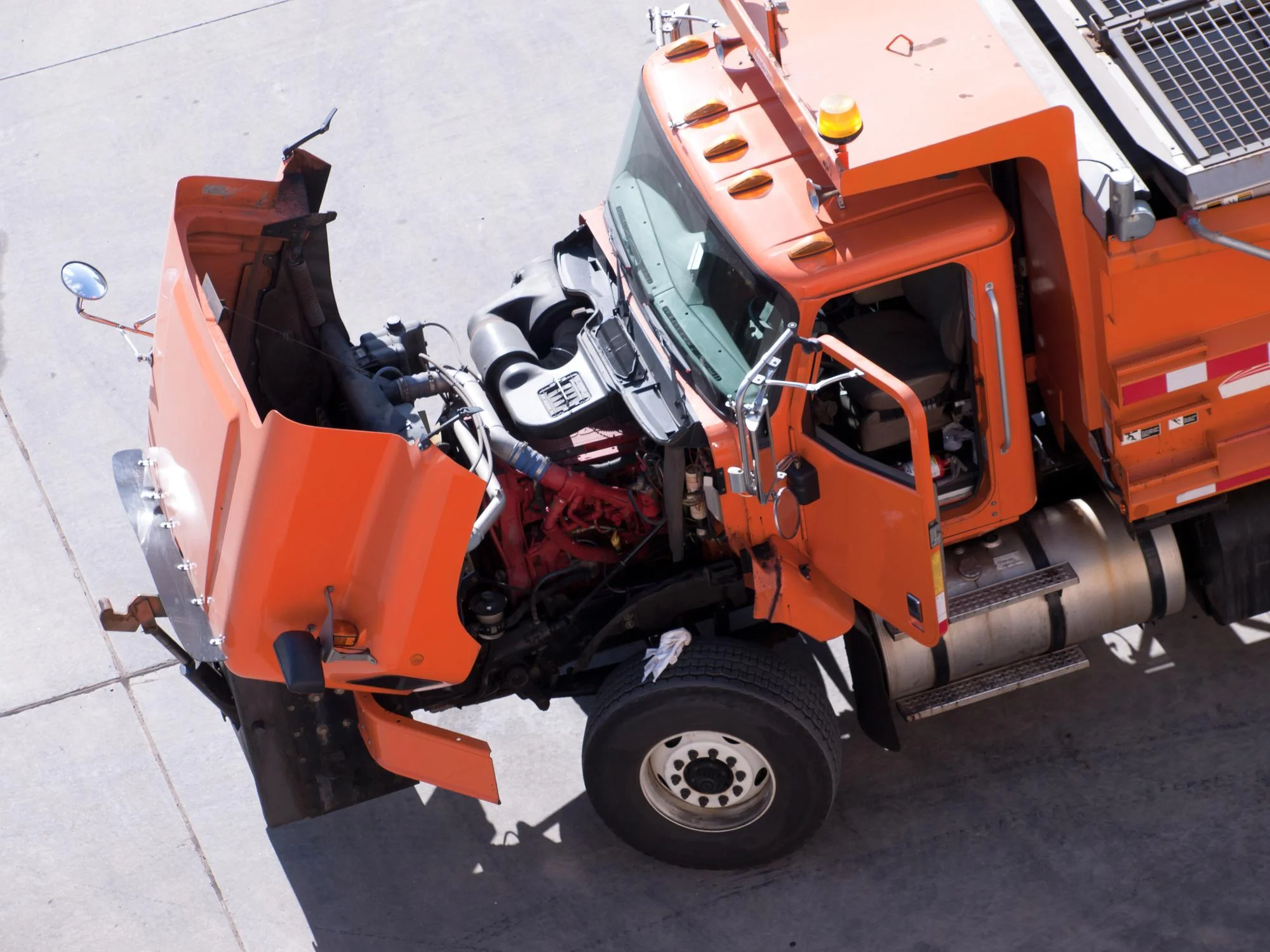When it comes to a hit and run accident, people typically picture a car speeding off after hitting a pedestrian or another car. Although this can be considered a hit and run, other scenarios also qualify. For example, a person who hits a parked car and flees the scene can also possibly be guilty of a hit and run crime.
According to California law, a hit and run accident is a situation where a driver causes a traffic accident by hitting a vehicle, pedestrian, or object and leaves the scene without providing identifying information. Hit and run accidents are considered a crime in most states. California Vehicle Code (CVC) section 20002 prohibits drivers from the following actions:
- Leaving the scene of an accident
- Failing to identify themselves to the other party involved
- Damaging someone else’s property
Depending on the situation, a hit and run in California can be charged as a misdemeanor or felony crime. Penalties can include probation, imprisonment in jail or prison, fines, and points on a California driving record.
Hit and Run Laws
Every state has hit and run laws, but they vary from state to state. Depending on the severity of the accident, cause of the accident, and the total amount of property damage, a hit and run can be considered a traffic infraction, misdemeanor, or felony. Regardless, there’s one thing consistent no matter which state you’re in, the consequences for a hit and run are significantly worse than stopping to take responsibility.
Points for moving traffic violations such as speeding or rolling a stop sign can get removed from your California driving record by completing a course from an approved traffic school. Hit and runs, however, are much more serious offenses. Penalties for hit and runs can be severe and include heavy fines, driving limitations, and jail time.
In California, there are two kinds of hit and run crimes– a misdemeanor or a felony offense. In Los Angeles County, the most common hit and run offense is California Vehicle Code (CVC) section 20002 which is a misdemeanor hit and run.
Under this law, any time a person is involved in a car accident that resulted in property damage, that person is required to stop immediately and exchange contact information with the other party. If the other party is not present, they must leave their contact information in a place where it will be found. It is considered a criminal offense under CVC section 20002 if a person fails to perform this legal duty after an accident that resulted from property damage.
One of the most common examples of CVC section 20002 hit and run offenses happens when a driver is involved in a fender bender on the busy streets of Los Angeles. During rush hour, hundreds of cars are on the road at the same time. A driver can easily crash into a parked car and immediately drive away from the scene. Another example is a scenario where a driver crashes their vehicle into the fence of someone’s house and quickly drives away from the scene. In California, both scenarios are considered a hit and run offense and are punishable by law.
Elements of a Hit and Run Crime
In Los Angeles, to get convicted of a misdemeanor hit and run, a prosecutor must prove beyond reasonable doubt the following elements of a hit and run:
- You were involved in a vehicle accident while driving
- The vehicle accident caused damage to another person’s property
- You knew that you were involved in a vehicle accident that caused property damage or knew from the nature of the crash that it was probable that property was damaged
- You willfully failed to perform one or more of the following duties: immediately stop at the accident scene or immediately provided the other party with your identifying information
When Is a Hit and Run a Felony?
There can be serious consequences for hit and run offenses, but penalties vary from state to state. In most states, prosecutors can charge hit and run offenders with either a misdemeanor or felony, depending on the circumstances of the case.
A catastrophic accident leaving victims with serious injuries or death will likely lead to a felony hit and run charge. In some states, offenders can get a felony charge even if a person isn’t injured but caused significant property damage. However, if no one was hurt in an accident or crash, the offender will likely get charged with a misdemeanor. Both misdemeanor and felony convictions can lead to jail time and or hefty fines.
In California, a hit and run conviction that violates CVC 20002 is considered a misdemeanor crime. The legal penalties for this violation include a fine of up to $1,000, up to six months in the county jail, and up to two points on that offender’s California driving record.
CVC 20001 is the law that defines a felony hit and run crime in California. This law makes it a felony for any driver to leave the scene of an accident when another person has been seriously injured or killed. California drivers should stop and provide reasonable assistance to injured persons. Felony hit and run convictions can result in a fine of up to $10,000 and up to four years in prison.
Who Can Be Involved in a Hit and Run?
Generally, hit and run accidents happen between moving vehicles. However, a hit and run can also include a vehicle colliding with the following:
- A pedestrian
- Someone riding a bicycle
- A parked vehicle
- A fixed object, personal property, or a building
Legal Obligation If You Are Involved in a Hit and Run
If you are driving and ever hit someone with your vehicle, you are legally required to remain at the scene of the accident and help that person. Accidents happen and striking a pedestrian or bicyclist can be a terrifying experience. But if this happens, try to remain calm and handle the situation to the best of your ability.
Take the proper steps that you’re legally required to if you are involved in a hit and run accident. Stop immediately and check on the person. Even if they might seem fine at the moment, they need to get a full evaluation from a medical professional. Call 911 and wait at the scene until first responders arrive. Provide your contact information as required by law enforcement and exchange information with the other party.
Failure to fulfill your legal obligations can result in more serious criminal charges, including vehicular manslaughter. If you’re the cause of someone else’s injuries, you have a legal duty to help or rescue the person if you’re able to do so safely.
Temporarily leaving the accident scene to seek help or safety is generally not considered a hit and run; as long as you return to the scene. If your vehicle is in an unsafe place, move it to a nearby parking lot or shoulder away from traffic.
If you crashed your vehicle into a parked car or caused property damage, you’re required to make an effort to find and notify the owner. If you are unable to do so, you’re required to leave a note on the vehicle or property with your contact information. Write down your name, address, phone number, and information describing the accident.
What Should You Do If You Are a Victim of a Hit and Run Accident?
Getting into any type of accident can be very traumatizing. It’s even worse if you’re involved in a hit and run accident. If you are a victim of a hit and run accident, here’s what you should and shouldn’t do:
Do not leave the accident scene for any reason – In most states, leaving a car accident scene is considered a misdemeanor crime. In addition to serious penalties, you could also get your driver’s license revoked. Even if you’re not at fault for the accident, driving away could get you in trouble unless you’re leaving temporarily to seek medical assistance or help. If you need to leave the accident scene, make sure you call the local police department and tell them about your situation.
Check and make sure you are safe – One of the first things you should do if you were involved in a hit and run crash is to check yourself for any apparent injuries. Next, check to see if any passengers are injured. If anyone is injured or hurt, call 911 before you do anything else. Local law enforcement can help along with medical first responders.
Gather necessary information – Once you are safe, write down as much information as you can. Gather contact information from the other driver and their vehicle including their vehicle color, make and model, and license plate number. It’s also a good idea to write down the location of the crash, the direction of travel, date, time, and weather conditions. Documenting this information is necessary so you do not have to rely on your memory regarding the accident.
Take photos – In addition to writing down the necessary information, take as many photos as you can at the crash scene. Take photos of any damages to your vehicle and the surrounding scenery.
Collect contact information from witnesses – If you’re at a busy street or intersection, there’s probably someone nearby who might have seen the accident. Check for witnesses nearby who saw the crash, and ask if they would be willing to give a statement to the police. Request for their contact information.
Call the police – Call local police as soon as you can. Law enforcement officers need to get to the scene as soon as possible so they can help you with your situation. After an officer arrives on the scene, they will take down a police report regarding the crash. Request a copy for your records. If they cannot provide you with one at the time, ask for the police officer’s contact information and police record number so you can obtain a copy at a later time. You will need a copy of this police report for any personal injury claim or auto insurance claim.
Contact your auto insurance carrier – After the police finish taking down the report and you’re able to safely leave the scene, call your auto insurance company to file a claim. The sooner you call, the better since the accident will still be fresh in your mind. If possible, it’s best to call and file a claim on the same day of the accident. After a car accident, the amount of time you have to file a claim with your insurance varies depending on the state you’re in. In California, you are required to report a traffic accident to the California Department of Motor Vehicles (DMV) within 10 days of the accident if there is an injury or if damages to the vehicle or vehicles involved are more than $750.
What Should You Do If You Are Responsible for a Hit and Run Which Resulted in Property Damage?
If you hit a parked car while driving on the street, inside a parking lot, or damage someone else’s property you are legally required to take responsibility. If the vehicle or property owner isn’t there, you need to leave a note on the vehicle or property with your contact information and a description of the accident.
If the owner of the vehicle or property is there, make sure you stay at the scene and call the police. Obtaining a police report is important to prevent any kind of hit and run allegation.
If you caused any damage to a vehicle or property, make sure to take the following steps:
- Stop and check the damages to your vehicle. Next, check for damages to the other vehicle or property. If anyone is injured, call the police immediately.
- Take photos of the accident scene including damages to the vehicle or property.
- Inspect the other vehicle. Write down the license plate, make, model, and vehicle color.
- Write down the address or location of the accident. It’s also a good idea to write down a description of the surrounding area. Document the date and time as well.
- Try to locate the vehicle owner if they are not at the scene. Before you walk away, make an effort to look for the owner. If you cannot locate them, leave a note on the vehicle or property with your contact information.
- Along with your contact information, write down a description of the accident.
- File a police report. This is an important precautionary step that will prevent any hit and run allegations against you. Voluntarily filing a police report is the right thing to do and can help minimize the consequences of a moving violation if you are at fault.
- Consider filing a report with your automobile insurance carrier. If the property owner asks for money regarding any damages, your insurance policy might cover it.
Consequences of a Hit and Run
Never leave an accident scene. Even if the accident isn’t your fault, leaving the scene of an accident is a crime. Fleeing the scene of a hit and run accident could result in serious consequences including:
- Increased or extra charges
- Fines
- Suspended license
- Points on your driving record
- Jail time
- A civil lawsuit brought by the other party
- Increased auto insurance premiums
Other consequences could include the requirement to obtain SR-22 insurance. Typically, SR-22 insurance is required by the court or by the state only for certain driving-related violations such as DUI convictions, reckless driving, or vehicle accidents caused by uninsured drivers.
The Exception to the Hit and Run Rule
If you were involved in an accident that damaged another vehicle or property, or caused injury to a person, you must not leave the accident scene. However, there is an exception to the hit and run rule: when the only damage is to your own property.
Under CVC 20002, if only your vehicle sustained any damage and there is no damage to anyone else’s property, there is no criminal liability. For example, you were driving a small car and hit a solid brick wall in front of a house. The only damage was to your vehicle and no other property. In this situation, you can leave the scene and it would not be considered a hit and run.
Hit and Run Insurance Considerations
A hit and run charge can negatively impact your auto insurance premium. If you failed to properly report an accident, you might be seen as more of a liability. And the higher the liability, the more expensive the insurance premium since the likelihood that you will get into another accident is higher.
If you’ve been involved in a hit and run accident, your auto insurance policy might cover some expenses. Keep in mind that coverages vary by state and by the individual insurer. Additionally, any policy limit or deductible you’ve selected will apply.
Here are specific insurance coverages you should know about:
- Collision coverage – This insurance pays to repair or replace your damaged vehicle if it has been in a crash with another vehicle or object. If you are a victim of a hit and run accident, you might be able to make a claim on your auto insurance policy even if they can’t find the other driver.
- Uninsured motor vehicle coverage – This insurance helps pay for your accident-related medical expenses, lost wages, or damages to your vehicle if the driver was at-fault and does not carry auto insurance. You can also use this insurance if the driver at-fault for the crash remains unknown. Keep in mind that uninsured motorist insurance isn’t available in every state. Check your personal auto insurance carrier for more details about how your policy handles hit and run accidents. In the event of a hit and run accident with an uninsured motorist, a qualified car accident lawyer like those found at Mesriani Law Group can also take the steps necessary to help recover pain and suffering damages.
Regardless if the other driver is around, you should still file a police report. Additionally, if you happen to find yourself in an unfortunate hit and run situation, you might want to contact your auto insurance company to provide you with information about your coverage.
Hit and Run Statistics
California has one of the highest accident rates in the country. Here are some alarming hit and run statistics you should know about:
- 17% of fatal hit and run accidents in the United States happened in California, the largest share of any state.
- From 2010 to 2019, there were 2,948 fatal hit-and-runs in California which resulted in 3,056 deaths. These numbers were higher than in any other state.
- There were 8.8 fatal hit and run crashes for every 10 billion miles traveled in California during this time; higher than any other state except Washington D.C. and Arizona.
- California, Florida, and Texas were the only states where more than 1,000 fatal hit and run accidents occurred.
- 17,531 victims were killed in a hit and run accident in the last 10 years, with the most fatalities in California.
- Fatal hit and run accidents jumped by 44%, from 1,342 in 200 to 1,939 in 2019. On average, this equals 33 vehicle crashes per state each year.
- From 2010 to 2019, 25 – 34-year-old drivers were the most likely victims to be killed in a fatal hit and run crash. During this time, 687 drivers in this age range were killed in a hit and run crash.
Is it Considered a Hit and Run if You Hit an Animal?
In most states, leaving the scene of an accident after hitting an animal such as someone’s pet, livestock, or wild animal is considered a hit and run. However, birds and small wild animals might be an exception. Regardless, if your vehicle ran over an animal, you should stop and move the body to the side of the road.
Unless it’s due to the driver’s negligence, generally, a driver won’t be found at fault for hitting an animal. However, you may still get hit and run charges in states without animal hit and run laws if you leave the scene. Possible charges can include:
- Failure to report an accident.
- Failure to leave information similar to a property damage incident.
- Animal cruelty charges; can include failure to act and directly causing harm.
In California, drivers who fail to stop, help, and report property damage or hitting an animal or pet can be charged with a misdemeanor. California is one of the few states in the country where pets are legally considered property. Pet owners have the right to file a civil lawsuit for animal abuse, wrongful death, or property damage if a driver hits their pet and leaves the scene.
If You Have Been a Victim of a Hit and Run Accident, Call Mesriani Law Group Today
Victims of hit and run accidents shouldn’t have to suffer alone. Under California law, accident victims are entitled to compensation for their losses and injuries. If you’ve been involved in a hit and run accident in Los Angeles County, Orange County, or anywhere else in California, you will need an experienced personal injury attorney that thoroughly understands hit and run laws. Our personal injury attorneys have over 20 years of experience working with victims and have obtained maximum compensation for their losses. Our law firm accepts clients on a contingency basis, meaning that if we don’t win your case, you don’t pay us anything. There are strict deadlines to file personal injury claims so don’t hesitate to contact us. Call Mesriani Law Group today at (866) 500-7070 for your free consultation.
Hit and Run FAQs
What is a hit and run crime?
A hit and run is a crime that happens when a driver leaves an accident scene without properly leaving identifying information when someone other than the driver was hurt, injured, or killed. In California, if you are convicted of a hit and run that violated California Vehicle Code 20002, you will be charged with a misdemeanor crime. The legal penalties for this violation include a fine of up to $1,000, up to six months in the county jail, and up to two points on that offender’s California driving record. CVC 20001 is the law that defines a felony hit and run crime in California. This law makes it a felony for any driver to leave the scene of an accident when another person has been seriously injured or killed. However, a violation of CVC 20001 is considered a wobbler offense which means that prosecutors can charge the crime as either a misdemeanor or a felony. Felony hit and run convictions can result in a fine of up to $10,000 and up to four years in prison.
What do police do in a hit and run?
If you are involved in a hit and run, you should call the police. After arriving at the scene, a police officer will create a police report based on the available facts of the accident. They will collect information and evidence such as victim and witness information and statements, photographs of the accident and scenery or environment, and any other available information or material that may be used as evidence, including video footage. The police officer will conduct a search of the accident scene and surrounding area to attempt and locate the driver and vehicle.
How do you define hit and run?
California Vehicle Code (CVC) 20002 defines a hit and run as a misdemeanor crime. California law states that it is a crime to leave the scene of an accident without stopping and proving your information when the accident caused only property damage instead of injuries to another party. CVC 20001 is the law that defines a felony hit and run crime in California. This law makes it a felony for any driver to leave the scene of an accident when another person has been seriously injured or killed.
What is the sentence of a hit and run?
Both misdemeanor and felony hit and run convictions can lead to jail time and or hefty fines. In California, a hit and run conviction that violates CVC 20002 is considered a misdemeanor crime. The legal penalties for this violation include a fine of up to $1,000, up to six months in the county jail, and up to two points on that offender’s California driving record. CVC 20001 is the law that defines a felony hit and run crime in California. This law makes it a felony for any driver to leave the scene of an accident when another person has been seriously injured or killed. A violation of CVC 20001 is considered a wobbler offense which means that prosecutors can charge the crime as either a misdemeanor or a felony. Felony hit and run convictions can result in a fine of up to $10,000 and up to four years in prison.








